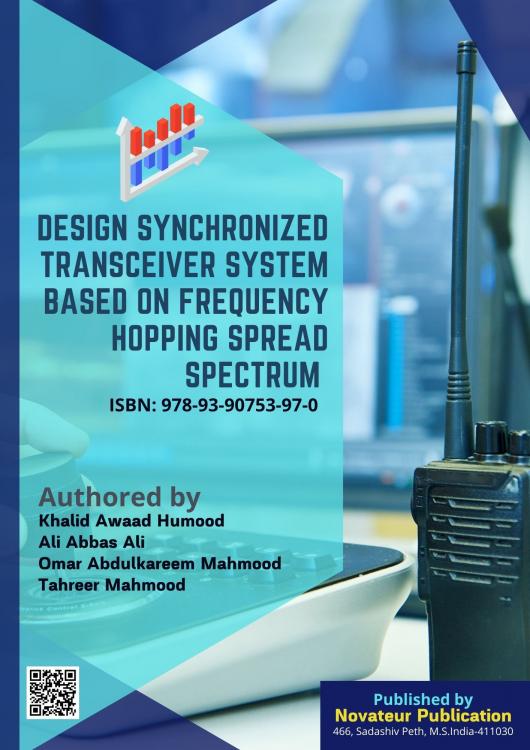New Website!!!!
Visit our new website,
Frequency hopping spread spectrum (FH/SS) communication system has played a growing role in modern communication systems for both military and civil applications due to its unique features. It is one of the avoidances spread spectrum (SS) communication which is used in the jamming and interference environments. In FH/SS system, a synchronization reception with the code at the receiver is used for de-spreading the received signal and then a subsequent data recovery is followed. There are many available synchronization techniques that can be used in FH/SSS. Most of these techniques require complex search operations and hence need complex hardware.
In this book: a contiguous and noncontiguous parallel digital BPF banks for FH/SS transceiver system has been designed and implemented in real time successfully using MATLAB-Simulink. The above designed bank of filters is used as a simple and efficient approach for synchronization of the FH/SS transceiver system. Four FFH/SS transceiver systems using contiguous and noncontiguous BPF banks are proposed to transmitting at data rate 160 k bit/sec for frequency hopping rate of 160 k hop/sec. Four systems have been used to spread the transmitted data in the HF band, 18 MHz (3-21MHz), 37.2 MHz (3- 40.2MHz) for ASK and BFSK FH/SSS using contiguous digital BPF banks respectively, 9.6 MHz (3-12.6 MHz), 19.2MHz (3-22.2MHz) for ASK and BFSK FH/SSS using noncontiguous digital BPF banks respectively.
Noncoherent detector is designed and simulated in the receiver due to Doppler effect. Two models of the jamming MTJ and HJ were designed and simulated. The proposed systems were examined in the presence of noise and two type of jamming: multitone and hopper. The obtained results proved that the proposed systems were passed these tests successfully.


This work is licensed under a Creative Commons Attribution-NonCommercial-NoDerivatives 4.0 International License.

Novateur Publication
Address: 466, Sadashiv Peth, Pune, Maharashtra, India-411030
Email:novateurp@gmail.com
Publications on this website are liscenced under
Creative Commons Attribution-NonCommercial-NoDerivs 4.0 International License